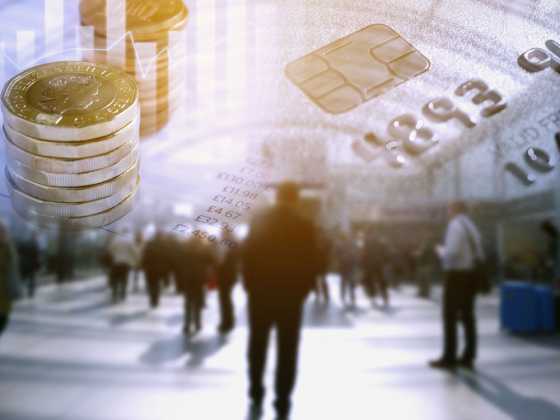A greener parcel delivery and pick-up fleet

FedEx Express has set a global target for 50 per cent of all newly-procured parcel pickup and delivery vehicles to be electric by 2025, rising to all new vehicle orders by 2030. We speak to Robert Peto, vice president for ground operations at FedEx Express UK, to find out how the company’s getting on with its green ambitions
Can you give an overview of your fleet, in terms of what ‘green’ vehicles you have?
Global transportation providers are operating in one of the most challenging sectors when it comes to decarbonisation. FedEx has long recognised the need to decouple our business growth from our carbon emissions, so that we can continue to meet the demand for express logistics services, while minimising our environmental impact.
Over the years, we have piloted and deployed solutions that diversify the fuel types used in our fleet. In the last year, we grew our global fleet of alternative fuel vehicles to more than 6,200, including hybrid, electric, liquefied or compressed natural gas, liquefied petroleum gas, and hydrogen fuel cell vehicles.
And we continue to make progress on our journey to electrify our pick-up and delivery fleet. Our first 23 electric vehicles have been introduced in the UK, allocated to two stations serving low and ultra-low emissions zones in London. And we also continue to prepare our facilities to meet the renewable energy needs of our future fleet and await delivery of further vehicles for UK stations in Barking, Enfield, and Oxford next year. We are still in the early stages of this journey, but we have an ambitious target to procure 50 per cent of new vehicle purchases as electric by 2025, rising to 100 per cent of new vehicle orders by 2030.
Looking particularly at your electric vans, how are these used and how are they charged?
As well as the UK, FedEx Express in Europe is starting to introduce more electric vehicles in the Netherlands, France, and Spain. The gradual introduction of these vehicles is to ensure a smooth transition, making sure that it is a proven solution that can be successfully scaled without any compromise on efficiency, reliability, or capability. All our new vehicles are being used for the first and final mile in urban centres, ensuring route demands are well within the vehicle’s battery range, but also where this change is encouraged to improve air quality in our cities. In London in particular, changing to these vehicles allows us to future-proof our access to low and ultra-low emissions zones, avoiding all tail-pipe emissions in restricted areas.
Were there any challenges to putting in place the charging infrastructure?
The infrastructure solutions for each station are designed with the specific station layout and operational needs in mind. The most critical early step is of course to ensure sufficient energy capacity from renewable sources. In some cases, we identify that we need to work with our energy provider to increase the incoming supply, but both these UK stations already had sufficient energy supply from renewable sources. To help manage energy consumption efficiently, we installed smart energy management systems as standard – these make it possible to adjust the rate of supplied energy to be lower, allowing for more vehicles to charge sufficiently but over a longer period where necessary.
The vehicle charging infrastructure in Bermondsey is installed adjacent to the package sort belt with one ground charging point for each vehicle. In Hornsey, our design combines a mixture of ground charging points and wall charging points, conveniently located where the vehicles are parked overnight.
How do your electric vans compare to diesel vans, in terms of fleet management?
Prior to placing our initial vehicle order, we identified routes that could be fulfilled by an electric vehicle in place of a diesel van. Since the general specification of the new vehicles is equivalent to existing vehicles, we were able to confidently allocate these new vehicles to these locations as direct replacements.
Where older vehicles still have a lifespan in our fleet, they are then redistributed within the UK and to ensure continuous modernisation of our fleet overall.
How do you approach last mile deliveries?
As well as shifting gradually to battery-electric pickup and delivery vans, FedEx Express also operates a fleet of over 40 e-cargo bikes, working alongside our vehicle fleet to deliver a more sustainable last mile. E-cargo bikes are a constantly evolving logistics solution, and we at FedEx have been fortunate to work with manufacturers on various iterations of the product since we began using them in 2020.
In the UK we operate the largest number of e-cargo bikes in the FedEx Express Europe fleet, and we continue to add these in select locations. The four-wheel e-cargo bikes, favoured by our couriers, are proving to be an efficient alternative to light commercial vans in areas where infrastructure and access make e-cargo bikes a viable solution.
Do your van drivers ever have to use the public charging network, and have they experienced any challenges?
We have designed our electric vehicle rollout to ensure that vehicles should have sufficient battery range and capability to fulfil couriers planned routes on a single charge. All the FedEx-owned and operated vehicles make use of overnight charging onsite in our stations, so they should have no need to use public charging infrastructure.
As we anticipate more of our transportation partners will transition to electric vehicles in the coming years, we’ve taken care to install additional charging infrastructure than we currently need for our owned vans. We hope that in providing a future charging option for our partners we are facilitating their own move to electric.






